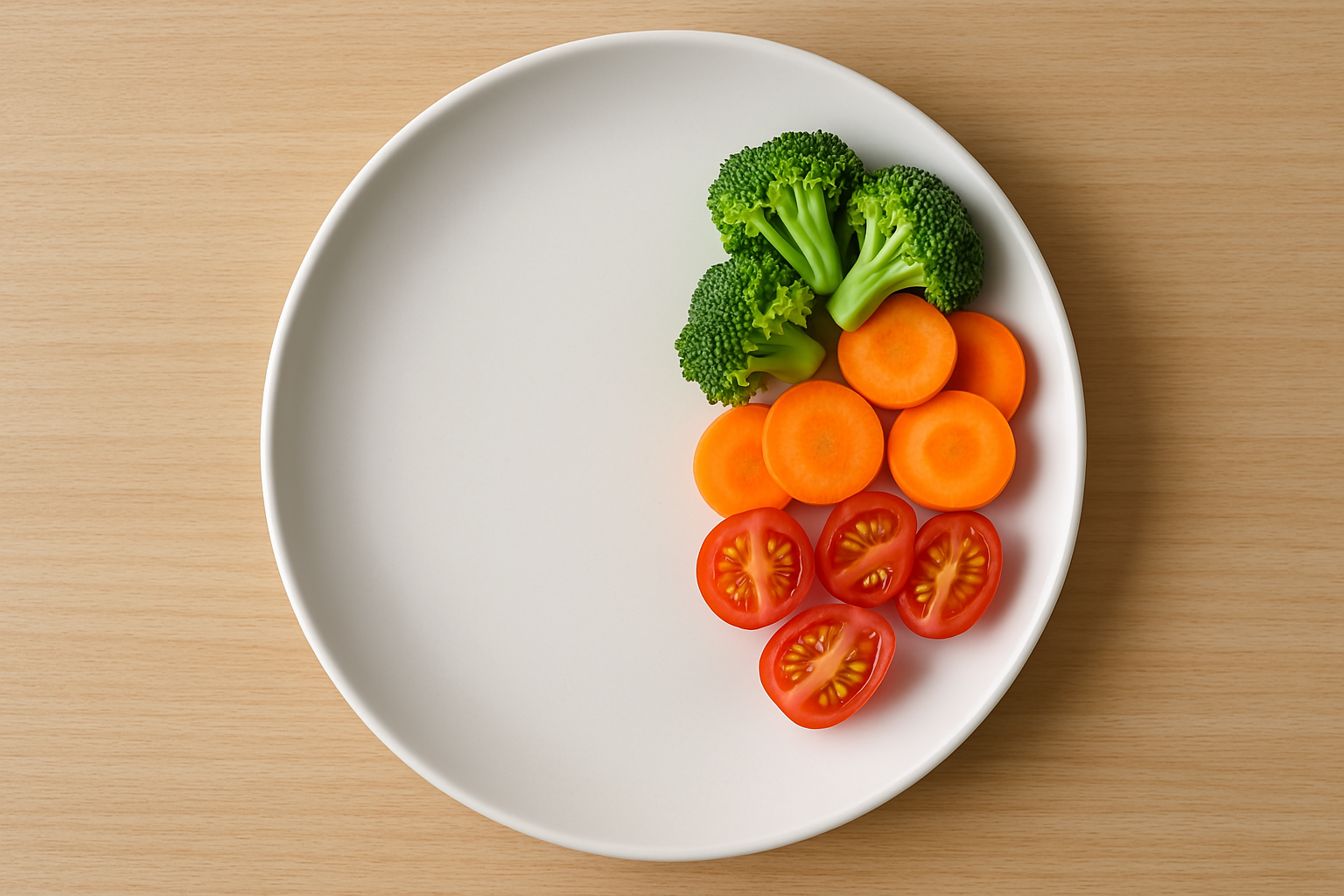
The Calorie Deficit: A Complete Guide
Weight loss discussions are everywhere, often filled with bold promises and confusing advice. If you're trying to manage your weight, you've undoubtedly encountered the term "calorie deficit". What does it actually mean? Is it truly the key to shedding pounds?
Essentially, yes, it's fundamental. But implementing it effectively isn't always straightforward.
Why Understanding Calories Matters
Understanding the calorie deficit is vital for losing weight effectively and sustainably. Forget the fads for a moment. Let's explore the science, the practical steps, and common hurdles surrounding this core principle of energy balance.
What Exactly is a Calorie?
Think of calories as units of energy. Your body requires energy for absolutely everything, from basic functions like breathing while asleep, to powering intense workouts, or even digesting your food.
We obtain this energy from the food and drink we consume, specifically from these macronutrients:
- Carbohydrates: Provide approximately 4 calories per gram.
- Proteins: Also provide around 4 calories per gram.
- Fats: The most energy-dense, offering about 9 calories per gram.
- Alcohol: Contains roughly 7 calories per gram, providing energy but minimal nutritional value.
The Energy Balance Equation
Imagine your body operates on an energy budget. This concept is known as Energy Balance. It follows a simple formula:
Energy In (Calories Eaten) - Energy Out (Calories Burned) = Change in Body Stores
Energy In is easy; it's everything you consume from chewing gum to coffee, it all counts
Energy Out is more complex. Your total daily energy expenditure (TDEE) comprises several components:
- Basal Metabolic Rate (BMR): The energy your body uses just to stay alive at rest (breathing, circulation). This accounts for the largest portion of daily energy burn (60-75% for most people). Factors like age, sex, body size, and muscle mass influence BMR. Muscle tissue is significantly more metabolically active than fat tissue; while estimates vary, each pound of muscle is thought to burn roughly 6-10 calories per day at rest just to maintain itself (compared to about 2 calories per pound for fat). Therefore, having more muscle mass leads to a higher overall BMR, meaning you burn more calories passively throughout the day.
- Thermic Effect of Food (TEF): Energy used for digesting and processing food. This makes up about 10% of your energy expenditure. Interestingly, protein requires the most energy to digest.
- Exercise Activity Thermogenesis (EAT): Calories burned during planned physical activities like running, gym sessions, or swimming. This varies significantly based on your activity levels.
- Non-Exercise Activity Thermogenesis (NEAT): Energy burned through everyday movements not classified as formal exercise. This includes fidgeting, walking, typing, cleaning, gardening, and even maintaining posture. Don't underestimate NEAT; it can significantly impact your total energy out!
Defining the Calorie Deficit
Now, let's clarify the core concept.
- Energy In = Energy Out: Your weight remains stable (energy balance).
- Energy In > Energy Out: You're in a calorie surplus. Excess energy is stored, primarily as body fat, leading to weight gain (This can be muscle or fat, must likely a combination).
- Energy In < Energy Out: You're in a calorie deficit. Your body lacks sufficient energy from food and must access stored reserves (mainly body fat) to compensate.
Consider this scenario. If your daily energy requirement (TDEE) is 2000 calories, but you consume only 1700 calories, you create a 300-calorie deficit. Your body then finds these missing 300 calories by breaking down stored fat. Maintaining this deficit consistently over time leads to fat loss and subsequent weight reduction.
This principle is rooted in the fundamental laws of physics (specifically, thermodynamics) energy cannot simply vanish.
A Note on the 3,500 Calorie Rule: You might hear that a deficit of 3,500 calories roughly equates to one pound (about 0.45 kg) of fat loss. Therefore, a 500-calorie daily deficit theoretically leads to one pound of weight loss per week. While this is a helpful guideline, remember our bodies are intricate biological systems, and all very unique. Actual results can differ!
Practical Ways to Create a Deficit
Theory is useful, but how do you apply this? There are two primary methods, and combining them is often the most effective strategy.
1. Reduce Calorie Intake (Decrease Energy In)
This is typically the most impactful factor for weight loss. Consider these strategies:
- Portion Control: Simply reducing serving sizes can make a substantial difference without drastic dietary changes.
- Food Swaps: Opt for lower-calorie alternatives. Replace sugary drinks with water or diet alternatives, choose lower-fat dairy if preferred, swap crisps for fruit, and select leaner cuts of meat. Fill your plate with vegetables – they are low in calories but rich in volume and nutrients.
- Focus on Nutrient Density: Prioritise foods abundant in vitamins, minerals, and fibre relative to their calorie content (e.g., vegetables, fruits, lean proteins, whole grains, legumes). These promote fullness and better health.
- Mindful Eating: Slow down your eating pace and pay attention to hunger and fullness signals. Question whether you are genuinely hungry or eating due to boredom or stress. Savouring food can naturally lead to consuming less.
- Food Tracking: Using an app or journal to log food intake temporarily can provide valuable insights into your calorie sources. This personal tracking builds a similar awareness to the recent requirement for calorie labelling on menus across the UK, which has often highlighted surprisingly high calorie counts in certain dishes, perhaps due to cooking methods or previously unnoticed additions like oils. While not suitable for everyone, it can be a helpful tool for building awareness about what you're truly consuming.
2. Increase Calorie Expenditure (Increase Energy Out)
Moving more increases the 'Energy Out' part of the balance. It's crucial to remember that calorie burn estimates are highly variable and depend heavily on factors like your body weight, the intensity of the activity, duration, and individual metabolism. The figures below are extremely rough examples to give a general idea.
Boost Formal Exercise (EAT)
- Cardio: Activities like running, cycling, swimming, dancing, and brisk walking are excellent for burning calories during the activity and improving heart health. Depending on the activity, intensity, duration, and your weight, a 30-60 minute session could burn anywhere from very roughly 200 to over 500 calories.
- Strength Training: Incorporate weightlifting, bodyweight exercises (squats, push-ups), or resistance bands. This builds or preserves valuable muscle mass. Direct calorie burn during a session might be slightly lower than intense cardio, perhaps around 150-300 calories per hour depending on intensity and rest times. However, its primary benefit for energy expenditure comes from building muscle, which is more metabolically active than fat, burning more calories even at rest 24/7 and helping sculpt your physique. It's crucial for ensuring fat loss rather than just weight loss (which can include muscle).
Increase Daily Movement (NEAT)
This is often overlooked but powerful! Small changes accumulate significantly over the day:
- Always take the stairs: Each flight uses a few extra calories (perhaps 5-15 calories per couple of flights), but consistency makes a big difference over time.
- Walk or cycle for short trips: A 10-15 minute brisk walk instead of driving might burn an extra 40-80 calories each way.
- Stand up and move hourly (desk job): Just standing burns slightly more than sitting. Getting up for a 5-minute walk each hour could add an extra 10-20 calories per break.
- Pace while talking on the phone: Pacing during a 30-minute call could burn an extra 50-100 calories compared to sitting still.
- Park further from entrances: Adding an extra 5-10 minutes of walking might burn 20-50 extra calories each time.
- Engage in active hobbies like gardening: Depending on the task (light weeding vs heavy digging), an hour can burn anywhere from 150 to 350+ calories.
Remember: These NEAT examples show small individual burns, but their power lies in their cumulative effect throughout the day and week.
3. The Winning Combination: Diet + Exercise
For most individuals, combining sensible dietary adjustments with increased physical activity yields the best results. Why?
- More Sustainable: You don't need to cut calories as drastically if you're also burning more. A 250-calorie food reduction plus burning 250 extra calories through activity achieves the same 500-calorie deficit as a large dietary cut, but often feels more manageable.
- Enhanced Health Benefits: Exercise offers numerous advantages beyond calorie burning, including a stronger heart, improved mood, better blood sugar control, and stronger bones.
- Muscle Preservation: Combining physical activity (especially strength training) with adequate protein intake helps ensure that weight loss primarily comes from fat, not muscle.
Calculating Your Starting Point
To begin, you need an estimate of your maintenance calories (TDEE).
- Online Calculators: Search for "TDEE calculator". These tools use formulas (like Mifflin-St Jeor) based on your age, sex, height, weight, and activity level to provide a ballpark figure. Use this as an initial estimate, Meal Matcher has its own version of this!
- Track and Observe: A more personalised approach involves tracking your typical food intake for 1-2 weeks while monitoring your weight. If your weight remains stable, your average daily calorie intake is roughly your maintenance level.
- Wearable Devices: Fitness trackers estimate calorie burn, but their accuracy varies. Use them as a general guide or motivator, but don't treat their numbers as exact.
Setting Your Deficit Target
Once you have an estimated maintenance number (e.g., 2200 calories), aim for a moderate deficit.
- Sensible Range: A deficit of 10% to 20% below maintenance is generally recommended. For a 2200-calorie maintenance, this means a deficit of 220-440 calories, resulting in a target intake of approximately 1760-1980 calories per day.
- The 500 Rule: A 500-calorie daily deficit is a common target, aiming for roughly 1 pound (0.45kg) of weight loss per week. This is often sustainable for many people.
Caution: Avoid Aggressive Calorie Cuts
Drastically slashing calories (e.g., creating a deficit over 1000 calories or consuming below 1200 calories for women / 1500 for men without professional guidance) might seem appealing for quick results but often leads to negative consequences. Risks include significant muscle loss, nutrient deficiencies, extreme fatigue, irritability, hormonal disruptions, and a potential metabolic slowdown that hinders future weight loss. These aggressive approaches are incredibly difficult to maintain and frequently result in rebound weight gain. Very Low Calorie Diets (below 800 kcal) should ONLY be undertaken under strict medical supervision.
Start with a small deficit and adjust based on your progress and how you feel.
Beyond the Basics: Why It's Not Just Numbers
While a calorie deficit is necessary for fat loss, navigating it successfully involves understanding complex biological and behavioural factors.
Your Body Adapts (Metabolic Adaptation)
As you lose weight and consume fewer calories over time, your body intelligently adapts to conserve energy. Your metabolism might slow down more than anticipated simply due to reduced body mass. You might also subconsciously move less (reducing NEAT), and hormonal changes (like lower leptin and higher ghrelin) can increase hunger and further slow metabolic processes. This phenomenon is known as adaptive thermogenesis. It can lead to frustrating weight loss plateaus.
Combat this by: Prioritising protein, incorporating strength training, considering planned diet breaks (periods at maintenance calories), and practicing patience.
Muscle Preservation is Key
Being in a calorie deficit puts you at risk of losing muscle along with fat, particularly if the deficit is too large, protein intake is insufficient, or strength training is neglected. Losing muscle lowers your metabolism and negatively impacts health and body composition.
Protein: Your Weight Loss Powerhouse
Protein plays a crucial role here. Think of your muscles constantly undergoing breakdown (MPB) and rebuilding (MPS). A calorie deficit can shift this balance towards breakdown.
Consuming adequate protein provides the essential amino acids needed to stimulate MPS, signalling your body to repair and build muscle despite the energy shortage. This helps counteract breakdown signals and preserve metabolically active muscle. Combining sufficient protein with resistance training sends an even stronger preservation signal. Aiming for around 1.2 to 2.0 grams of protein per kilogram of body weight daily (or slightly more for very active individuals) is often recommended during fat loss.
Protein also uniquely influences the 'Energy Out' side via the Thermic Effect of Food (TEF). It has a higher TEF than carbs or fats:
- Protein: Burns ~20-30% of its calories during processing.
- Carbohydrates: Burns ~5-10%.
- Fats: Burns ~0-3%.
This means 100 calories from protein might yield only 70-80 net calories, compared to 97-100 net calories from fat. Focusing on protein within your deficit helps with:
- Better Muscle Retention: Counteracting muscle loss.
- Slightly Increased Energy Out: Due to higher TEF.
- Improved Satiety: Protein is very filling, aiding hunger management.
Prioritising lean protein sources (chicken, fish, turkey, eggs, Greek yoghurt, legumes, tofu) is a smart strategy for effective and sustainable fat loss.
Managing Hunger
Eating less often means feeling hungrier. Managing this is vital for adherence.
Tackle hunger with: High-protein and high-fibre foods (very satiating), plenty of non-starchy vegetables (high volume, low calories), adequate hydration (thirst can mimic hunger), sufficient sleep (poor sleep affects hunger hormones), and mindful eating practices.
Food Quality Matters
While the deficit drives weight loss, the *type* of calories consumed significantly impacts hunger, energy levels, overall health, and sustainability. 500 calories from chicken, broccoli, and quinoa affect you differently than 500 calories from biscuits. Prioritise whole, minimally processed foods most of the time for better satiety, nutrient intake, and long-term well-being.
The Mental Aspect (Psychology & Behaviour)
Your relationship with food, established habits, stress levels, social environment, and mindset are crucial.
- Sustainability is Paramount: Extremely strict diets rarely succeed long-term. Find a flexible approach you can maintain. The best diet is one you can adhere to consistently.
- Avoid Obsession: Excessive focus on numbers can lead to anxiety or disordered eating patterns. Strive for balance, not perfection.
- Navigate Life's Events: Learn to handle social occasions, holidays, and stressful times without completely abandoning your plan or succumbing to guilt.
Dealing with Plateaus
Weight loss is rarely linear; stalls are normal. This could be due to water retention masking fat loss, metabolic adaptation, slightly relaxed tracking, or the need to adjust intake/activity as your body weight decreases. Don't panic! Review your approach, be patient, perhaps introduce changes to your routine, or consider a brief diet break at maintenance calories.
Making it Last: Sustainable Strategies
The calorie deficit is the mechanism, but long-term success hinges on building a healthy lifestyle.
- Be Patient and Moderate: Aim for slow, steady progress (0.5-1.5 lbs or 0.2-0.7 kg per week is realistic and sustainable for most). Faster isn't necessarily better.
- Embrace Flexibility: Abandon the "all or nothing" mentality. Include foods you enjoy in moderation. An 80/20 approach (focusing on nutritious choices 80% of the time, allowing flexibility 20%) works well for many.
- Focus on Habits: Think long-term. Cultivate sustainable habits around nutritious eating, regular movement, quality sleep, and stress management. These habits endure long after reaching a target weight.
- Listen to Your Body: Learn to recognise your hunger and fullness cues. Over time, you may rely less on tracking and more on these internal signals (intuitive eating).
- Prioritise Overall Health: Remember your motivations. Are they solely scale-based, or do they include feeling more energetic, improving health markers (like blood pressure or cholesterol), gaining strength, or boosting confidence? Celebrate non-scale victories!
- Seek Support When Needed: If you're struggling or have underlying health conditions, don't hesitate to seek professional help. A Registered Dietitian or Nutritionist can offer personalised guidance. Your GP can advise on any health implications.
The Takeaway Message
The calorie deficit is neither a magic bullet nor a myth. It is the fundamental requirement for fat loss, based on the principle of energy balance.
However, simply cutting calories indiscriminately is not the optimal path. A successful, sustainable strategy involves:
- Understanding your individual energy needs.
- Creating a moderate deficit through sensible eating and increased activity.
- Prioritising nutrient-dense, whole foods.
- Consuming adequate protein and engaging in strength training to protect muscle.
- Managing hunger effectively and listening to your body's signals.
- Practicing patience, flexibility, and consistency.
- Focusing on building enduring healthy habits.
Consider the calorie deficit as a crucial tool in your health toolkit. Use it intelligently and compassionately within the broader context of your overall well-being. It's about finding a sustainable balance that helps you achieve your goals while living a healthy, fulfilling life.



